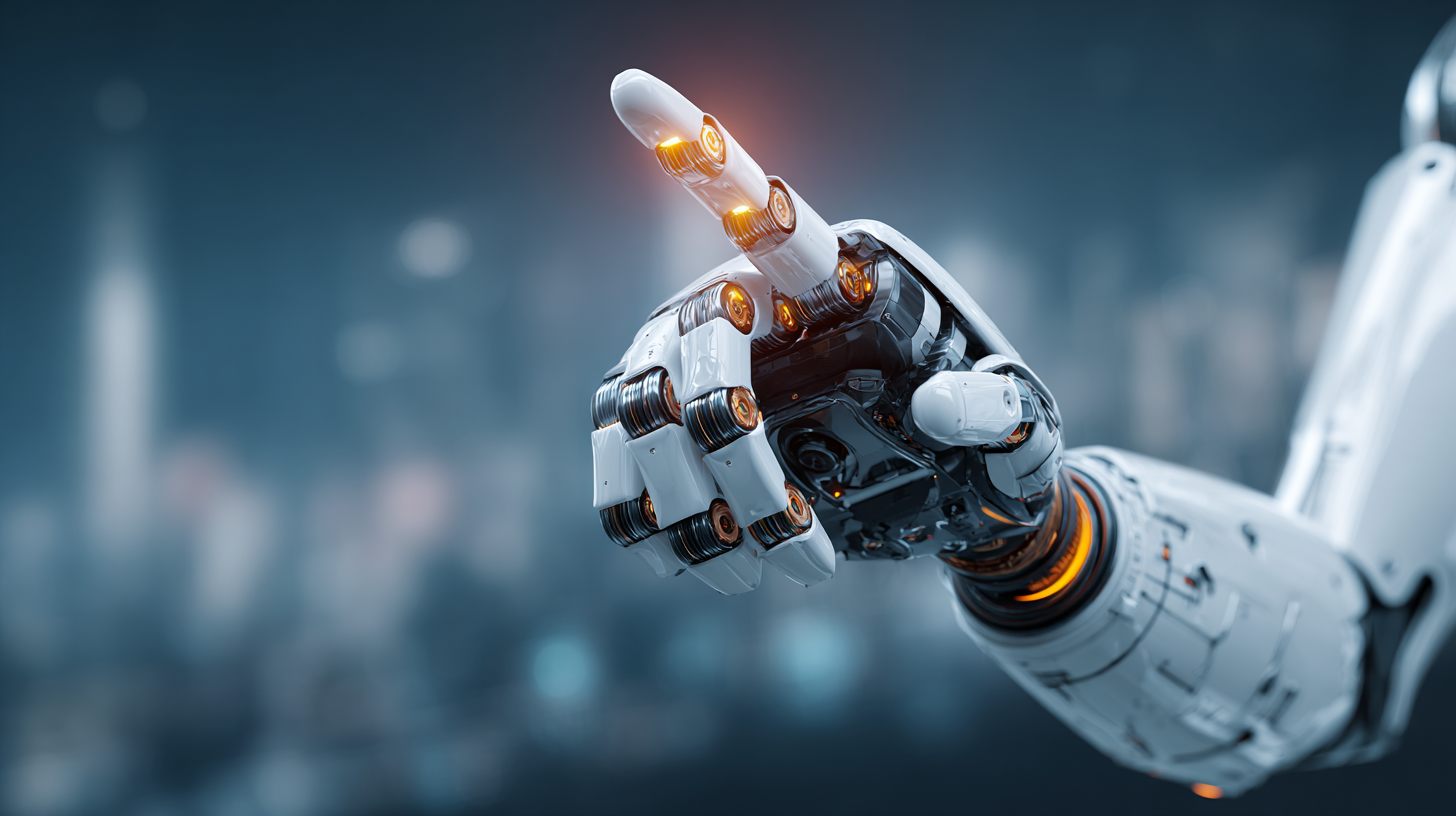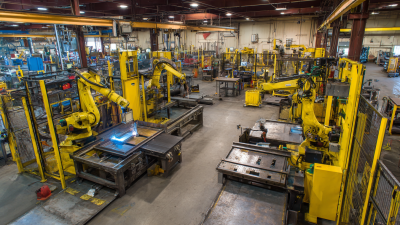Unlocking Efficiency: How Robotic Automation Solutions are Transforming Everyday Business Operations
In today's fast-paced business environment, organizations are increasingly turning to robotic automation solutions to enhance efficiency and streamline operations. According to a report by McKinsey, around 70% of companies are actively exploring the potential of automation technologies, and research from Gartner indicates that by 2024, nearly 80% of organizations will have implemented some form of robotic process automation (RPA). These solutions not only reduce operational costs but also improve accuracy and speed in various business functions, from data entry to customer service. As businesses continue to adapt to the post-pandemic landscape, the adoption of robotic automation solutions is poised to become a critical driver of innovation, enabling companies to focus on strategic initiatives and value creation while automating mundane tasks.

Harnessing Robotics for Streamlined Processes in Daily Operations
In today's fast-paced business environment, harnessing robotics for streamlined processes in daily operations is no longer optional but imperative. A report from McKinsey indicated that automation could boost productivity by up to 1.4% per year. This significant potential allows companies to focus their human resources on more strategic tasks while increasing efficiency in routine processes. Industries such as manufacturing and logistics have particularly benefited from robotic process automation (RPA), enhancing their ability to manage inventory and production schedules with unprecedented accuracy.
Moreover, a recent study from Deloitte highlighted that organizations implementing RPA have experienced a 20-30% reduction in operational costs. By integrating robotic solutions into everyday workflows, businesses can minimize human error and improve turnaround times. For instance, companies like Amazon have revolutionized order fulfillment through robotics, resulting in faster delivery times and enhanced customer satisfaction. As businesses continue to evolve, the adoption of robotic solutions will be crucial in maintaining a competitive edge and achieving operational excellence.
Unlocking Efficiency: How Robotic Automation Solutions are Transforming Everyday Business Operations
| Automation Type | Use Case | Time Saved (hrs/week) | Error Reduction (%) | Cost Savings (%) |
|---|---|---|---|---|
| Data Entry Automation | Invoice Processing | 10 | 90 | 25 |
| Customer Support Bots | FAQ Handling | 8 | 80 | 30 |
| Process Automation | Order Fulfillment | 12 | 85 | 20 |
| Email Automation | Newsletter Distribution | 5 | 70 | 15 |
| Robotic Process Automation (RPA) | Compliance Reporting | 15 | 95 | 40 |
Key Areas Where Automation Drives Maximum Efficiency
Robotic automation solutions are increasingly reshaping everyday business operations, especially in key areas where they drive maximum efficiency. According to a recent report by McKinsey, businesses that implement robotic process automation (RPA) can achieve up to a 30% increase in productivity, particularly in repetitive tasks such as data entry and invoicing. This efficiency gain allows employees to focus on more strategic initiatives, enhancing overall organizational performance.
Another significant area impacted by automation is customer service. A survey by Gartner indicates that by 2025, 75% of customer interactions will be powered by AI and automation technologies. This shift not only reduces response times but also enhances customer satisfaction. Companies adopting these technologies have reported up to a 20% reduction in operational costs while simultaneously improving service quality. As organizations continue to leverage robotic automation, they unlock unprecedented levels of efficiency that propel them ahead of the competition.
Unlocking Efficiency: Automation in Key Business Operations
Overcoming Common Challenges in Implementing Robotic Solutions
Implementing robotic automation solutions can significantly enhance efficiency in business operations, but it is not without its challenges. One of the foremost obstacles organizations face is the resistance to change from employees. Many workers may fear job displacement or lack the necessary skills to work alongside automated systems. To overcome this, companies must foster a culture of collaboration, emphasizing that robotic solutions are designed to augment human capabilities rather than replace them. Providing training and reskilling opportunities can ease this transition, enabling employees to adapt and thrive in an automated environment.
Another common challenge is the integration of robotic systems with existing processes and technologies. Businesses often struggle with compatibility issues, leading to disruptions in workflow and productivity. To address this, meticulous planning and thorough assessment of current systems are essential before implementation. Utilizing pilot programs can help identify potential pitfalls and allow for adjustments in a controlled environment. Additionally, engaging experienced vendors who understand the specific needs of the organization can facilitate smoother integrations, ensuring that robotic solutions complement rather than complicate existing operations.

Measuring the Impact of Automation on Business Performance
The impact of automation on business performance is increasingly evident as companies embrace robotic automation solutions. These technologies streamline routine tasks, enabling employees to focus on higher-value activities. For instance, data entry, inventory management, and customer service inquiries are now efficiently handled through automated systems, resulting in significant time savings and reduced human error. Businesses that employ such automation report improved operational workflows, allowing them to respond more quickly to market demands and enhance overall productivity.
In measuring the impact, key performance indicators (KPIs) such as cost savings, productivity rates, and employee satisfaction levels come into play. Companies have observed a marked decrease in operational costs due to the reduction of manual labor and the associated errors. Furthermore, automated processes contribute to faster turnaround times, which can significantly boost customer satisfaction. As organizations continually evaluate these metrics, the transformative power of automation becomes clear, demonstrating its role as a vital driver of business efficiency and growth.
Future Trends in Robotic Automation for Enhanced Productivity
As robotic automation technology evolves, its future trends promise to significantly enhance productivity across a variety of business sectors. One notable trend is the integration of artificial intelligence (AI) with robotic process automation (RPA), enabling machines to learn from their environment and make informed decisions. This synergy allows businesses to streamline operations further, reduce human error, and adapt more quickly to changing market demands.
Another emerging trend is the expansion of collaborative robots, or cobots, which work alongside human workers. Unlike traditional industrial robots that operate independently, cobots are designed to assist and augment human tasks, enhancing workforce efficiency without replacing human jobs. This collaborative approach not only boosts productivity but also fosters a more innovative workplace culture as employees can focus on higher-value activities while leaving repetitive tasks to automated systems. As businesses increasingly adopt these technologies, the future of robotic automation looks promising, paving the way for smarter and more efficient operations.


